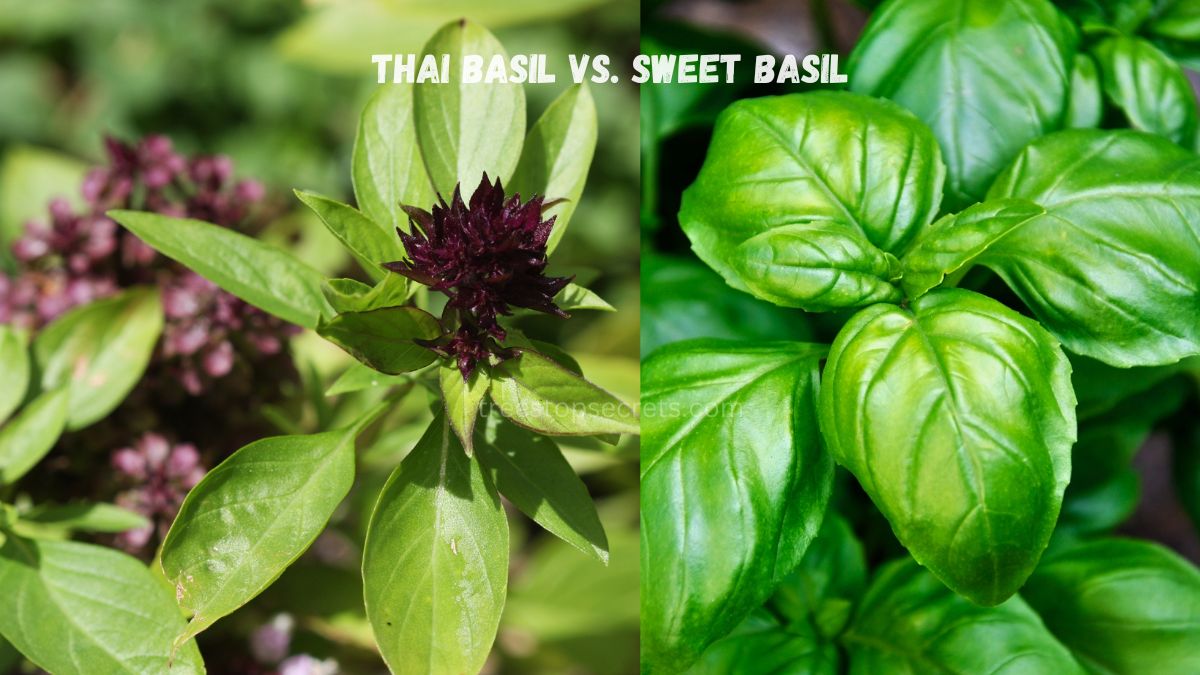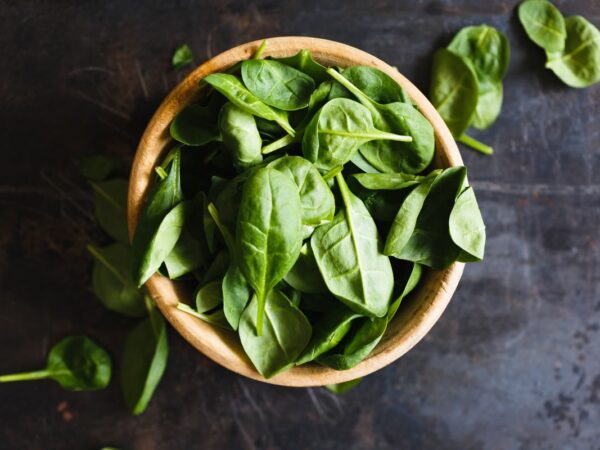Key Takeaways
- Thai basil and sweet basil share the same botanical family. It’s their unique qualities that make them suited to separate culinary applications. Knowing these differences will take your culinary prowess to the next level and select the best basil for your recipe!
- Use of Thai basil will impart a sweet, mildly spicy flavor, augmented by notes of anise. In particular, sweet basil delivers a fresh aroma and signature warmth. When you’re creating your menu, think about how you can use these very distinct flavor profiles to improve your dishes.
- Whether you are using sweet or Italian basil in place of Thai basil, consider the overall flavor profile of your dish. Many recipes will lend themselves to this substitute. Just note that the flavor will develop, and think about how the dish will develop over time.
- Freshness is very important. Using fresh herbs such as Thai basil or sweet basil will take the flavor and aroma of your dishes to a new level. With this wonderful addition your meals will be infused with flavor!
- No matter which you choose, growing your own basil is sure to be a success. By knowing how to recreate them, you’ll learn how to produce vigorous plants that will perform beautifully in your kitchen. This means understanding the proper light and soil conditions.
- Learn about the culinary, cultural, and historical importance of both varieties. Understanding their historical contexts can deepen your appreciation for these herbs and inspire you to experiment with them in your cooking.
What’s the difference between Thai basil and basil? Though related, these two plants provide completely different flavor and fragrant profiles. Thai basil has a robust spicy, sweet flavor. Its warm notes of anise contribute to its widespread popularity and utility within different Southeast Asian cuisines.
Everyday basil, the fragrant herb that usually stars in Italian cuisine, offers a gentler, peppery taste. The pictorial contrasts are incredible! Thai basil has purple stems and pointed leaves, while sweet basil has wider green leaves.
Knowing the difference between these two can make you a better cook, enabling you to pick the right herb for your dish. Here’s a rundown of what makes each basil variety unique and how to cook with them to unlock their full potential in your kitchen.
Understanding Thai Basil and Sweet Basil
While both Thai and sweet basil are members of the Lamiaceae family, they present very different culinary experiences. Thai basil, distinguishable by its anise-like fragrance and a subtle, warm spiciness, is a pillar of Southeast Asian cuisine.
In comparison, sweet basil, which is most commonly used in Italian cuisine, features that traditional sweet and peppery flavor profile. Dive into the colorful world of basil hybrids and cultivars, and you’ll find that sweet basil has more than a few varieties to its name.
In contrast, it’s easy to recognize Thai basil (or chi neang vorng) by its sharply distinctive characteristics.
1. What are the key botanical differences?
Sweet basil Thai basil does well as a perennial herb and will get up to 18 inches tall at maturity. Its shiny, narrow, slightly serrated leaves, paired with a purple stem, make it quite distinctive.
Unlike sweet basil, which tends to predominantly be an annual herb, this plant shines wonderfully. Sweet basil has a delicate structure with smooth, rounded leaves paired with a green stem.
The flowering patterns are different than sweet basil, which often flowers white—Thai basil flowers are pink-purple blooms.
2. How do their flavor profiles compare?
Sweet basil provides the Mediterranean sweet taste you expect, but the Thai variety, known for its aromatic taste and unique flavors, delivers a sweeter touch with distinct notes of anise and licorice. This flavor intensity makes Thai basil perfect for Thai dishes such as phở and bánh xèo, enriching their complexity.
3. What visual characteristics distinguish them?
- Thai Basil: Narrow, shiny leaves; purple stems; jagged edges.
- Sweet Basil: Smooth, rounded leaves; green stems; delicate texture.
4. What are their nutritional differences?
Both types of basil, including Thai basil, are rich in vitamins, but Thai basil stands out with unique flavors and compounds that add to its health benefits. Incorporating either can help elevate your Thai dishes.
Culinary Applications of Thai Basil
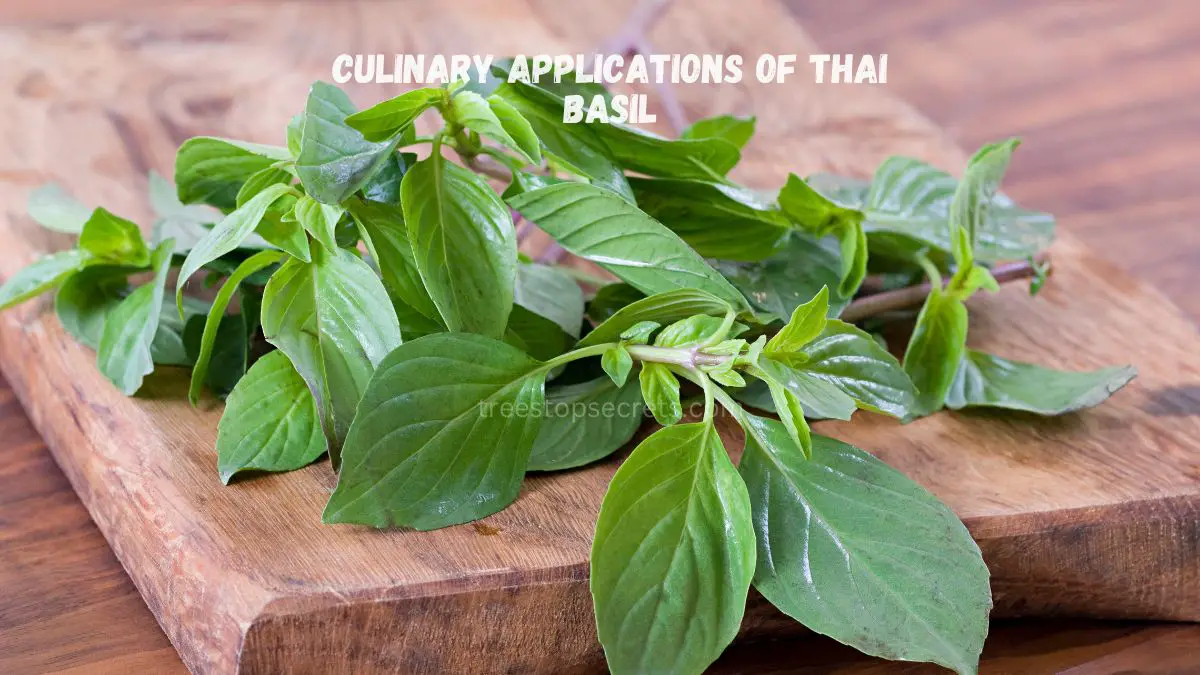
Thai basil is considered a key component in Southeast Asian cuisine, especially in Thai and Vietnamese dishes. Its complex, deeply fragrant anise-like flavor, savory and slightly peppery, pairs very well with aggressive aromatics, like ginger, garlic, and chilies. Thai basil takes a star turn in beloved culinary favorites such as pad krapao and green curry.
It’s the bedrock culinary usage that makes their complex, aromatic flavor so distinctive. The herb’s durability allows it to stand up to the highest cooking temperatures. The heat makes it ideal for cooked dishes such as pad kee mao and pho, where its delicate essential oils can really transform the dish.
1. Which dishes are enhanced by Thai basil?
- Pad krapao
- Green curry
- Pad kee mao
- Tom yum soup
- Pho
Thai basil, known for its aromatic taste, pairs nicely with grilled proteins like chicken and seafood, infusing life into grilled preparations and brightening noodle dishes and soups. Look for it in fresh salads, where it contributes a vibrant freshness.
2. How does Thai basil differ in culinary uses from sweet basil?
Timing is key when adding Thai basil, a unique variety known for its aromatic taste. Add it in the last few minutes of cooking to maintain its bright flavor! Unlike sweet basil, often used in Italian dishes, Thai basil is perfect for Thai dishes and retains its flavor under high heat.
3. What are popular recipes featuring Thai basil?
- Thai basil chicken
- Drunken noodles
Thai basil, with its aromatic taste, is fantastic in fusion recipes, where it can add a lovely depth to sauces and dressings, including a delicious thai basil sauce.
4. How have regional cuisines adapted Thai basil?
The culinary impact of Thai basil, particularly in Thai dishes, can be seen in the food traditions of Vietnam, Cambodia, and further afield. From North to South, each area has its own distinct take on dishes using Thai basil sauce, exemplifying the herb’s versatility and influence on today’s culinary innovations.
Substituting Thai Basil
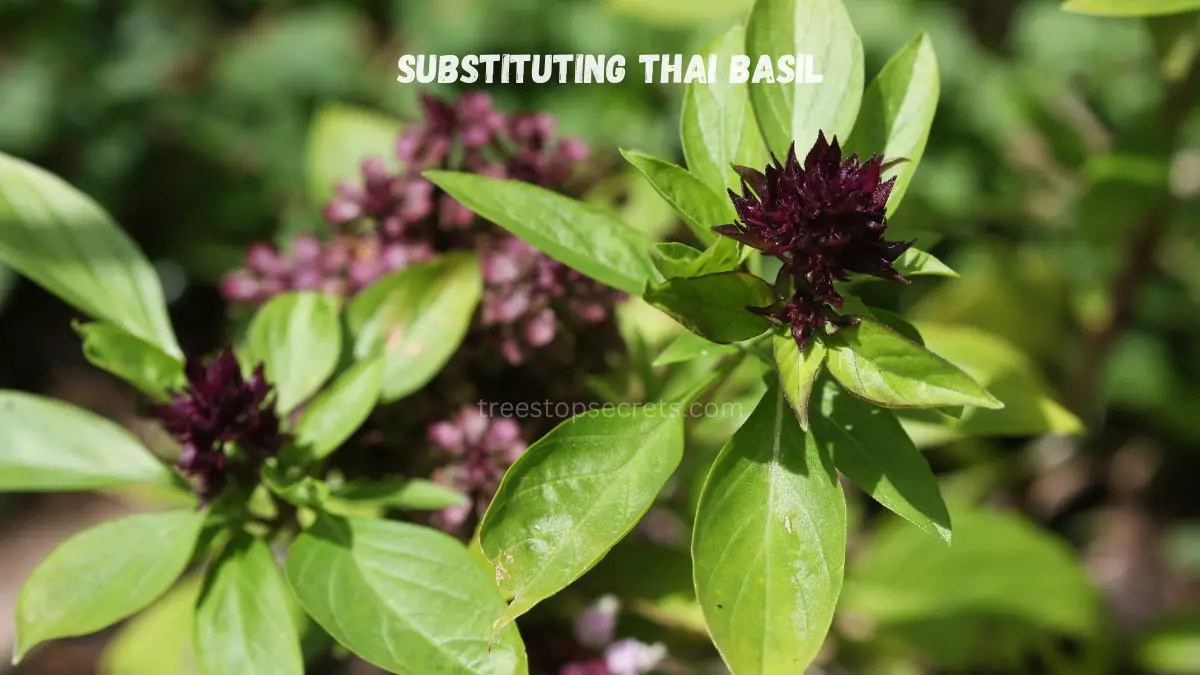
Whenever you find yourself in a bind and out of Thai basil, sweet basil will do the trick. It’s important to know what the flavor differences are. Sweet basil has a milder, peppery-sweet flavor as opposed to the bold, savory licorice flavor of Thai basil.
What gets lost are the deeper, more complex flavors. Recipes like Thai green curry can often end up tasting flat. Many dishes, pasta or salads for example, will benefit from sweet basil’s fresh, bright notes, and you’re not really losing anything.
1. When is it appropriate to substitute with sweet basil?
Sweet basil should be used in dishes where the bold flavor profile of Thai basil would overpower the dish. So think stir-fries or soups where the sauce really takes over.
Khaengkarn of Soothr recommends working on the sweetness—either by reducing sugar or increasing salt and spices to create a more rounded flavor profile. For example, if you’re making a basil pesto, you can use a substitute sweet basil, just consider the flavors as a whole.
2. What other basil varieties can replace Thai basil?
Try substitutes such as holy basil or lemon basil. Holy basil has a unique, peppery flavor, while lemon basil will add its own, citrusy flavor.
These flavorful varieties are superstars in Thai cuisine, but perhaps are not so easily accessed.
3. How to adjust recipes when substituting basil types?
When you sub, adjust cooking times accordingly. Sweet basil doesn’t hold up as well flavor-wise, so toss it in during the last moments of cooking.
Make sure to taste and adjust seasonings because you’ll likely have to play around with it to achieve the proper balance. Taking notes on these substitutions will help shape future meals.
Growing and Storing Basil Varieties
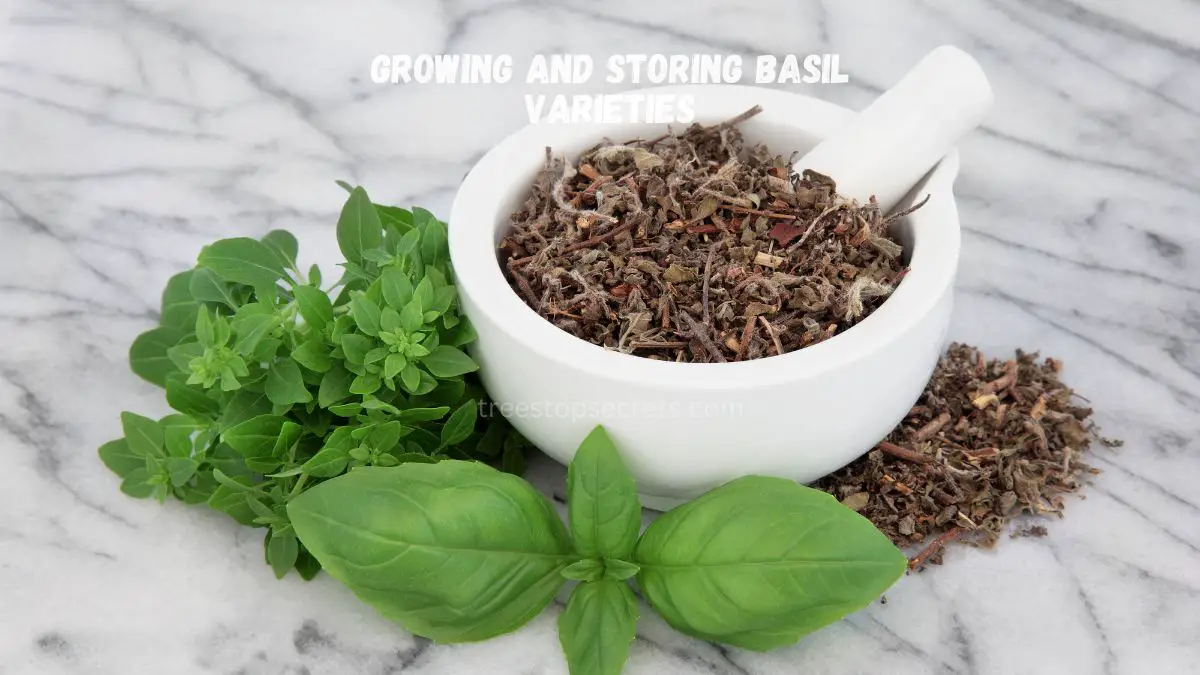
Knowing how to grow and store the different basil varieties, such as Thai basil and sweet basil, enhances your cooking adventures, especially in Thai cooking, where these fresh herbs are invaluable assets to any home garden.
1. What are the ideal growing conditions for Thai basil?
Growing conditions Thai basil loves the heat, preferring temperatures ranging from 70°F to 90°F. It thrives with high humidity, similar to its native tropical habitat.
Soil that drains well is very important; try adding compost to improve drainage and nutrients. Watering consistently is important, but don’t plant them in soil that is too wet — this leads to root rot quickly!
Companion planting with Thai basil, like marigolds, can keep pesky insects away, making plants grow even more beautifully. Watch for pests such as aphids and spider mites, which can sap your crop of health.
2. How do storage practices differ between the two types?
To store your fresh Thai basil, wrap it in a damp paper towel. Afterwards, store it in a plastic, zip-top bag and refrigerate to keep it fresh for up to seven days.
Sweet basil does great in this as well, but can last a bit longer. When dried, both varieties keep their flavor, but sweet basil is more likely to have a longer shelf life.
Airtight containers are essential when storing basil long-term to keep the volatile oils in, preventing flavor loss while it’s stored. You can freeze basil in ice cube trays with water or oil. This technique is a great way to preserve your basil for use all year round!
3. What climates favor the growth of Thai basil versus sweet basil?
Thai basil prefers hot climates, and tropical conditions are best. In comparison, sweet basil is much more genial, growing abundantly in hot and temperate climates.
Temperature extremes can be very stressful for both plants, resulting in a diminished growth habit and shredded flavor. Southeast Asia adores Thai basil.
Sweet basil, which we know as the most common culinary basil, flourishes in the Mediterranean and other parts of the US. Whatever variety you choose to try, as climate change continues to unfold, monitoring shifting weather patterns will be key to fruitful growing.
Historical and Cultural Context
Thai basil and sweet basil may be easily confused, but their histories could not be more divergent. These special histories further enhance our understanding and value for each herb. Thai basil, known for its distinctive flavours, comes from Southeast Asia, where it has long been revered in traditional Thai cooking. Slightly spicy and anise-like, its flavor is essential to the zingy balance of popular dishes such as Pad Thai and green curry, often enhanced with a touch of Thai basil sauce.
It was thanks to ancient trade routes that the herb spread outward. As it spread, it became more popular and more localized, fitting into the food culture of each place it reached. Sweet basil is deeply rooted in Mediterranean cuisine, especially Italy. For hundreds of years, it has been worshipped and celebrated, frequently associated with religious worship and communal ceremonies.
As centuries passed, sweet basil established itself as an essential in Italian cuisine, infusing sauces and other classics such as pesto pasta. The emergence of globalization gave it an additional push, letting it spread like wildflower across cuisines around the globe. Culturally, Thai basil represents youth and freshness in Thai culture, typically found in the colorful street markets and lively festival foods.
In Italian culture, sweet basil symbolizes warmth and hospitality, adorning family dining tables during holiday celebrations. Today, both varieties are celebrated by chefs around the world and featured in culinary competitions and food festivals, highlighting their unique culinary traits and importance in many global cuisines.
The journey of these herbs reflects not just culinary preferences but cultural narratives that connect us through flavors and traditions.
Essential Oils and Aroma Differences
Understanding the essential oil compositions of Thai basil and sweet basil reveals much about their aromatic properties and culinary uses. For example, Thai basil has a spicy, anise-like aroma due to compounds such as eugenol and linalool. In contrast, sweet basil is loaded with linalool and estragole, giving it a deliciously sweet, clove-like perfume.
These fine differences define their aromas and deepen their healing properties. Both types provide strong anti-inflammatory manifestations with the antibacterial properties.
1. How do essential oil compositions vary?
The aromatic compounds found in Thai basil’s essential oils give it an intense flavor that pairs well with spicy dishes such as Thai curries. Sweet basil’s pungent profile enhances classic Italian cuisine, like pesto. Each variety of basil has a different anatomical structure that accentuates them for particular culinary impact.
This aromatic diversity stimulates the imagination and inspires experimentation, encouraging new culinary palettes to awaken.
2. What role do these oils play in flavor and aroma?
The essential oils in both basils deepen the culinary experience. The aroma is one of the most important aspects of food enjoyment, as it can elevate the entire visual appearance of a meal. For instance, a sprinkle of fresh Thai basil can transform a simple stir-fry into a fragrant delight.
Meanwhile, sweet basil can brighten a tomato sauce, creating a balanced flavor.
3. How do these differences affect culinary choices?
The decision of whether to go Thai or sweet basil could completely change the destiny of a dish. Adding Thai basil to an Italian dish could develop some pretty unexpected aromas. On the flip side, sweet basil can sweeten the pungent flavors in Asian cuisine.
Chefs and home cooks alike love to play with both types to discover new harmonies that please the mouth.
Conclusion
Though different, both varieties offer distinctive flavors and fragrances that will elevate your food and drinks. Relish the peppery undertones of Thai basil leaves in all your sautéed dishes and soups! Sweet basil, in contrast, excels in salads and sauces. Learning to swap one out for the other will ensure you get the best out of your dishes. Cultivating the basil varieties available will enrich your garden with beauty and variety, and provide you with a wealth of flavorful fresh herbs to use. Learn more about the extensive history and culture behind these flavorful herbs to gain a new perspective. Learn all about the exciting world of basil, have fun mixing together flavor profiles, and cook up mouthwatering meals that will have everyone coming back for seconds. Take your culinary skills to the next level today!
Frequently Asked Questions
Is Thai basil the same as sweet basil?
No, Thai basil and sweet basil leaves are not the same. Sweet basil has a softer, sweeter flavor, while Thai basil, often used in Thai dishes, offers a spicier, anise-like taste. Their distinctive flavors make them better suited for different recipes and preparations.
Can I use sweet basil instead of Thai basil?
You can, yes, use sweet basil leaves in place of Thai basil, but it will taste different. Since sweet basil doesn’t have the same powerful spiciness as Thai basils, be sure to recipe-tweak if you go that route.
What dishes typically use Thai basil?
Thai basil, a key ingredient in Thai dishes like Pad Krapow or Pho, offers a distinctive flavor that enhances the aromatic taste of stir-fries, soups, and salads.
How should I store Thai basil?
To store Thai basil, keep it in a glass of water, like a bouquet, at room temperature. For optimal freshness, wrap it in a damp paper towel and then place it in a plastic bag in the fridge for up to a week, maintaining its aromatic taste.
Can I grow Thai basil at home?
Heck, yes! Thai basil, a popular culinary herb, grows best in nutrient-rich, well-drained soil with full sun and consistent moisture, making it ideal for Thai cooking in containers or gardens.
What are the essential oils in Thai basil?
Thai basil, a culinary herb known for its distinct strong aroma and flavor, is high in essential oils like eugenol and linalool, offering health benefits including anti-inflammatory qualities.
Is Thai basil available year-round?
Yes, Thai basil tend to be more widely available year round in grocery stores—especially in areas with a melting pot of cuisines! You might find it more plentiful during those hot summer months.
Image Source: Paid image from CANVA

